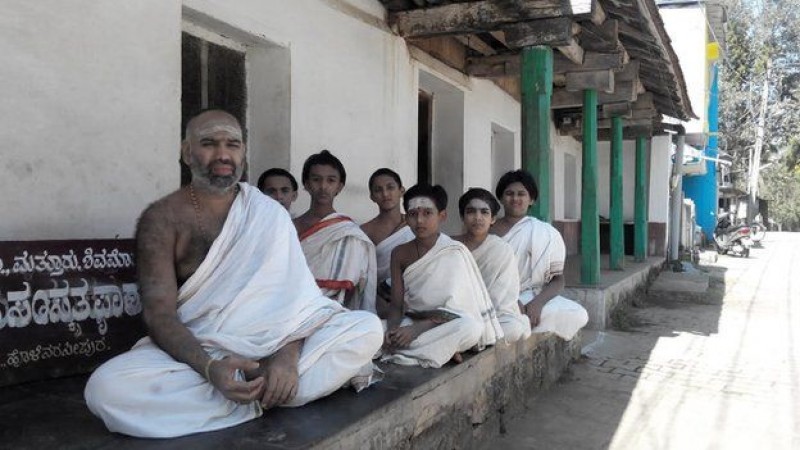
In a world rapidly moving towards modernization and globalization, there are pockets of cultural heritage that remain steadfast. One such remarkable phenomenon is the continued use of Sanskrit, an ancient Indian language, in some Indian villages. This article explores these unique villages where Sanskrit is not just a subject of academic interest but a living, breathing language of daily communication.
Sanskrit, often referred to as 'Devabhasha' or the language of the gods, has a rich historical and cultural significance. It is the liturgical language of Hinduism, Buddhism, and Jainism and the classical language of ancient Indian literature, including the Vedas, Upanishads, and epics like the Mahabharata and Ramayana.
In ancient India, Sanskrit was the medium of instruction in Gurukuls (traditional schools) and the language of administration and scholarly discourse. It was the lingua franca that connected diverse regions and cultures across the Indian subcontinent.
Mattur, a small village in Karnataka, is perhaps the most well-known example of a Sanskrit-speaking community. Here, Sanskrit is not just a second language but the primary mode of communication. The village's residents converse in Sanskrit in their daily interactions, from greeting each other to conducting business.
The village boasts a traditional education system where children are taught Sanskrit from an early age. Schools in Mattur include Sanskrit in their curriculum, ensuring that the language is passed down to future generations. The residents also organize cultural events and festivals that celebrate Sanskrit heritage.
Hosahalli, located near Mattur, shares a similar passion for Sanskrit. The residents of Hosahalli have preserved the language through oral tradition and education. The village is known for its dedication to maintaining Sanskrit's purity and relevance in modern times.
In Hosahalli, Sanskrit is seamlessly integrated into daily life. The village's festivals, religious ceremonies, and social gatherings are all conducted in Sanskrit, fostering a strong sense of community and cultural pride.
Jhiri, a lesser-known village in Madhya Pradesh, is another shining example of a Sanskrit-speaking community. Despite its small size and remote location, Jhiri's commitment to preserving Sanskrit is remarkable.
The villagers of Jhiri have taken collective efforts to ensure the language's survival. They have established Sanskrit schools and promote the language through local initiatives and cultural events. The community's dedication has made Jhiri a beacon of Sanskrit revival in central India.
In these villages, education plays a pivotal role in preserving Sanskrit. Traditional Gurukuls, where students live and learn in a guru-shishya (teacher-student) relationship, are common. These schools focus on teaching Sanskrit grammar, literature, and philosophy, instilling a deep appreciation for the language in young minds.
While traditional methods remain, modern educational approaches have also been adopted. Schools in these villages integrate technology and contemporary teaching techniques to make Sanskrit learning more accessible and engaging for the younger generation.
Festivals and rituals in these villages are vibrant celebrations of Sanskrit culture. Events like Vedic chanting, classical dance, and music performances in Sanskrit are commonplace. These cultural activities not only preserve the language but also strengthen community bonds.
Residents of these villages contribute to Sanskrit literature by writing poems, essays, and scholarly articles. Their works are often published in Sanskrit magazines and journals, promoting the language's literary richness.
Despite the dedication of these villages, modernization poses a significant threat to the survival of Sanskrit. The younger generation, influenced by global culture and economic opportunities, may drift away from their linguistic heritage.
Various organizations and government bodies are working to promote Sanskrit. Initiatives include offering scholarships for Sanskrit studies, conducting workshops and seminars, and creating digital resources to facilitate learning.
Community involvement is crucial in sustaining Sanskrit. Villagers actively participate in language preservation activities, from teaching Sanskrit to organizing cultural events. Their collective efforts ensure that Sanskrit remains a vibrant part of their daily lives.
The influence of Sanskrit extends beyond India. Scholars worldwide study the language for its rich literary and philosophical heritage. Sanskrit texts are translated into various languages, making ancient Indian wisdom accessible globally.
These Sanskrit-speaking villages often host international scholars and tourists interested in experiencing living Sanskrit. Cultural exchanges between these villages and the global community foster mutual respect and understanding of ancient Indian traditions.
The future of these Sanskrit-speaking villages depends on sustaining their linguistic and cultural heritage. Continued efforts in education, cultural preservation, and community involvement are essential.
These villages serve as an inspiration for other communities to revive and preserve their linguistic heritage. Their success stories demonstrate the possibility of maintaining ancient traditions in a modern world.
In a rapidly changing world, the villages of Mattur, Hosahalli, and Jhiri stand as testaments to the enduring legacy of Sanskrit. Through education, cultural preservation, and community efforts, they have managed to keep an ancient language alive and relevant. Their story is not just about language preservation but also about the resilience of cultural heritage in the face of modernization. As these villages continue to thrive, they remind us of the rich tapestry of human history and the importance of preserving our diverse linguistic heritage.
What kind of diet should a cancer patient follow after chemotherapy, know what the experts say
How Much Milk Should Women Drink During Pregnancy?
Parenting Tips: How should a mother-daughter relationship be?